There’s something magical about how Korean comfort foods – those soul-nourishing dishes passed down through generations – can make everything feel better. Whether you’re battling a winter cold, recovering from exhaustion, or need an emotional boost, these healing meals wrap you in warmth from the first bite.
From steaming bowls of bone broth that soothe sore throats to spicy stews that clear your sinuses, Korean comfort foods do more than fill your stomach – they heal your spirit. Each dish carries centuries of wisdom about using food as medicine, with ingredients carefully chosen to restore both body and mind.
So when you need extra comfort, try these 10 Korean staples that work like edible hugs. They’re the same recipes Korean grandmothers have been making for generations – guaranteed to warm you up from the inside out and turn any bad day around, one delicious spoonful at a time!

When life gets tough, or your body feels run down, there’s nothing quite like a steaming bowl of juk to make everything feel better. This Korean rice porridge has been the go-to comfort food for generations – the kind of simple, nourishing meal your grandmother might make when you’re under the weather. What makes juk so special is how it meets you where you’re at: when you’re sick, you can keep it plain with just a drizzle of sesame oil; when you need more comfort, you can add soft eggs or shredded chicken, and when you’re just craving something cozy, you can jazz it up with kimchi or roasted seaweed.
It’s the ultimate edible hug – warm, gentle, and always exactly what you need. Whether you’re battling a cold, recovering from a long day, or just needing a taste of home, juk has this magical way of making you feel cared for, one spoonful at a time. (And let’s be honest – it’s saved plenty of us from next-day regrets after one too many soju shots, too!)
Juk (죽) – Korean Rice Porridge
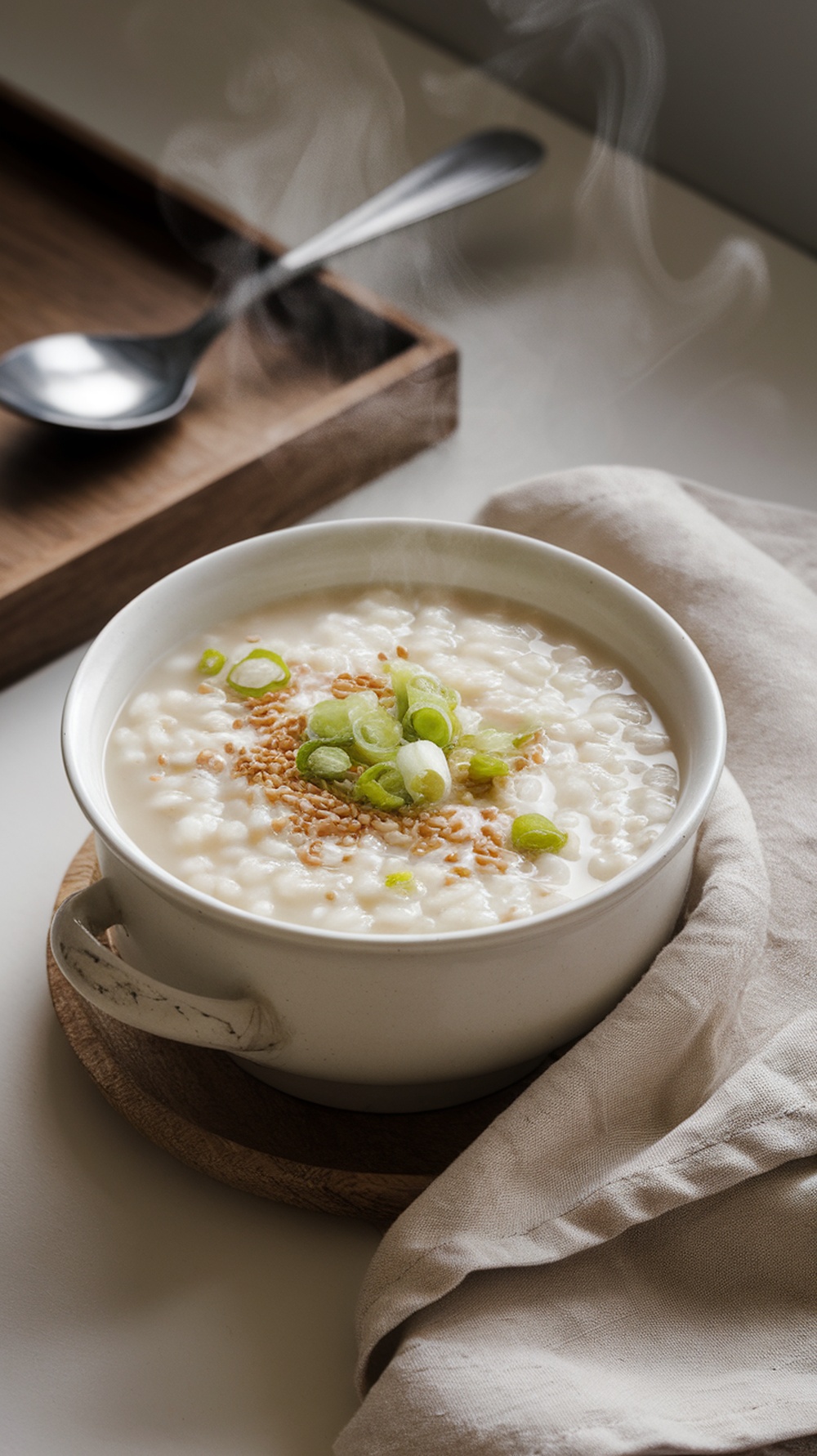
There’s something deeply soothing about cradling a warm bowl of juk when you’re feeling low. This creamy Korean rice porridge has been a healing tradition for generations – the kind of food that feels like a gentle embrace for your weary body and soul. When you’re sick, stressed, or need comfort, juk meets you where you’re at with its simple, nourishing warmth.
What makes juk so special is its beautiful versatility. On days when even toast seems too much, plain juk with just a drizzle of golden sesame oil becomes the perfect gentle meal. When you need more comfort, add soft-poached eggs or tender chicken shreds. And when you’re craving something heartier, a sprinkle of kimchi or crispy roasted seaweed transforms it into a flavor-packed pick-me-up.
The magic of juk lies in its simplicity. With just rice and water (or broth if you’re feeling fancy), you can create something profoundly comforting in about 30 minutes. As it simmers away, filling your kitchen with its gentle aroma, you’ll understand why Korean grandmothers have been making this for generations – it’s edible love in bowl form.
(And let’s be real – it’s also the ultimate next-day remedy after a night of one too many soju shots!)
Basic Juk Recipe:
- Rinse ½ cup short-grain rice until water runs clear.
- Combine 4 cups water in a pot and bring to a boil.
- Reduce heat and simmer for 25-30 minutes, stirring occasionally.
- Season with salt to taste.
- Top with your choice of:
- Healing: minced garlic, ginger, scallions.
- Comforting: soft egg, shredded chicken.
- Flavorful: kimchi, roasted seaweed, sesame seeds.
Samgyetang (삼계탕) – Ginseng Chicken Soup
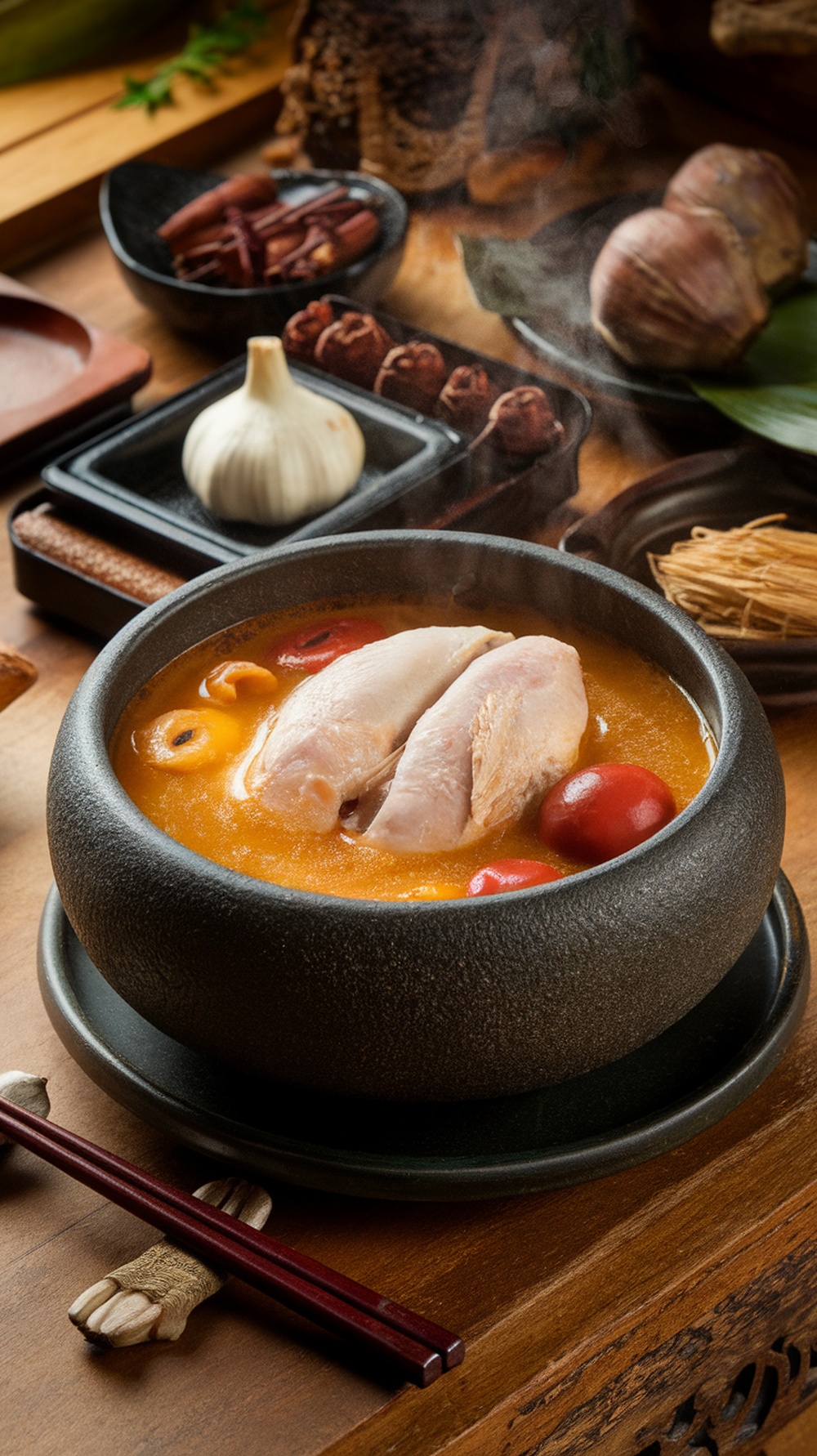
This nourishing chicken soup—stuffed with glutinous rice and simmered with ginseng, garlic, and jujubes—defies expectations by being a hot-weather comfort food. Koreans believe its steaming, mineral-rich broth “fights heat with heat,” replenishing energy lost to summer fatigue. The tender chicken, infused with herbal warmth, pairs perfectly with coarse salt and kimchi for balance. More than a meal, it’s an edible tradition, especially cherished during summer’s “book days” for its revitalizing magic.
Preparing Samgyetang is straightforward, even for beginners. The slow cooking process allows delicious flavors to meld together, resulting in a rich broth that’s both comforting and revitalizing. Enjoy it with a sprinkle of salt and a side of kimchi for an authentic experience!
Ingredients
- 1 whole young chicken (about 3-4 lbs)
- 1/2 cup glutinous rice
- 1-2 ginseng roots (or ginseng extract)
- 5-6 cloves of garlic
- 2-3 cups of water or chicken broth
- 1-2 green onions (for garnish)
- Salt and pepper to taste
Instructions
- Soak the glutinous rice in water for at least 2 hours or overnight. Drain before using.
- Prepare the chicken by cleaning it thoroughly and removing any excess fat. Stuff the chicken with the soaked rice, ginseng roots, and garlic cloves.
- Place the stuffed chicken in a large pot and cover it with water or chicken broth, making sure the liquid covers the chicken well.
- Bring to a boil, then reduce to a simmer. Cover and cook for 1-1.5 hours until the chicken is tender and cooked.
- Once cooked, season the broth with salt and pepper to taste. Serve hot, garnished with chopped green onions.
Miyeok-Guk (미역국) – Seaweed Soup
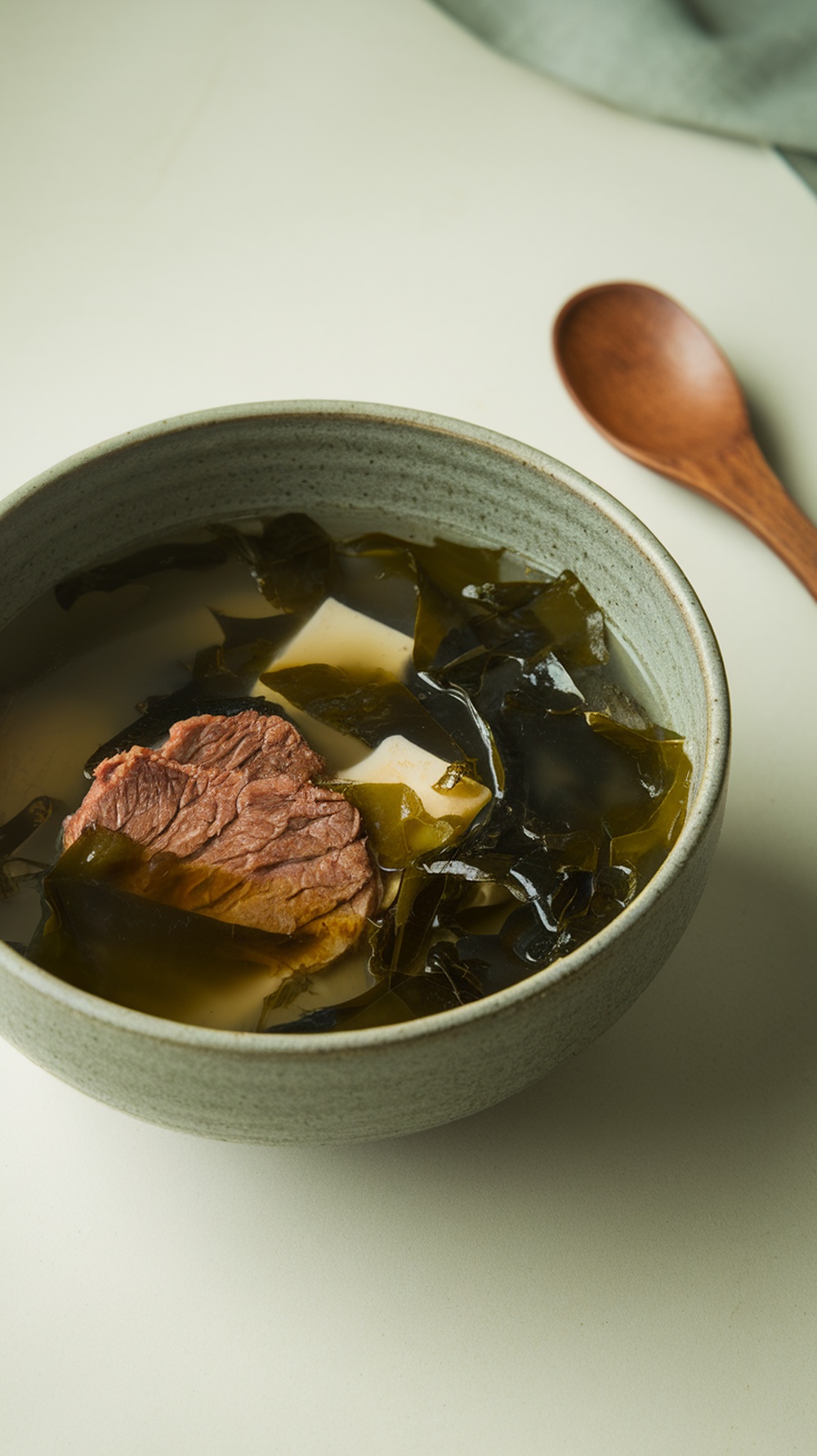
Seaweed soup, or Miyeok-Guk, is a healing and comforting meal in Korean culinary tradition. The broth offers rich umami flavors complemented by delicate oceanic undertones, resulting in a nourishing and fulfilling dish. This soup represents essential comfort food for many Koreans, especially during sickness or stress.
This dish is wonderfully uncomplicated, using just a handful of core ingredients. The wakame seaweed contributes a unique mouthfeel, while the broth foundation can be strengthened with meat proteins like beef or fish or maintained as vegetarian-friendly using tofu. Regardless of how it’s presented—as a main course or supporting dish—Miyeok-Guk reliably delivers physical warmth and emotional solace.
Preparation starts with soaking the dehydrated seaweed and slowly cooking it in flavored broth. This soup pairs naturally with rice and easily accommodates individual taste adjustments. Enjoying a bowl of this calming soup provides a genuine opportunity to benefit from the restorative qualities of Korea’s traditional comfort food culture.
Ingredients
- 1 cup dried wakame seaweed
- 6 cups water
- 1/2 pound beef (brisket or other cuts), sliced
- 2 tablespoons sesame oil
- 3-4 cloves garlic, minced
- 2 tablespoons soy sauce
- Salt to taste
- 2 green onions, chopped
Instructions
- Soak the wakame seaweed in water for about 20-30 minutes until it expands. Drain and set aside.
- In a large pot, heat sesame oil over medium heat. Add the sliced beef and cook until browned.
- Stir in the minced garlic and cook for an additional minute until fragrant.
- Add the soaked seaweed and water, then bring to a boil. Reduce the heat and let it simmer for about 20 minutes.
- Stir in soy sauce and salt to taste. Cook for an additional 5 minutes.
- Garnish with chopped green onions before serving, and enjoy your warm bowl of Miyeok-Guk!
Galbitang (갈비탕) – Short Rib Soup
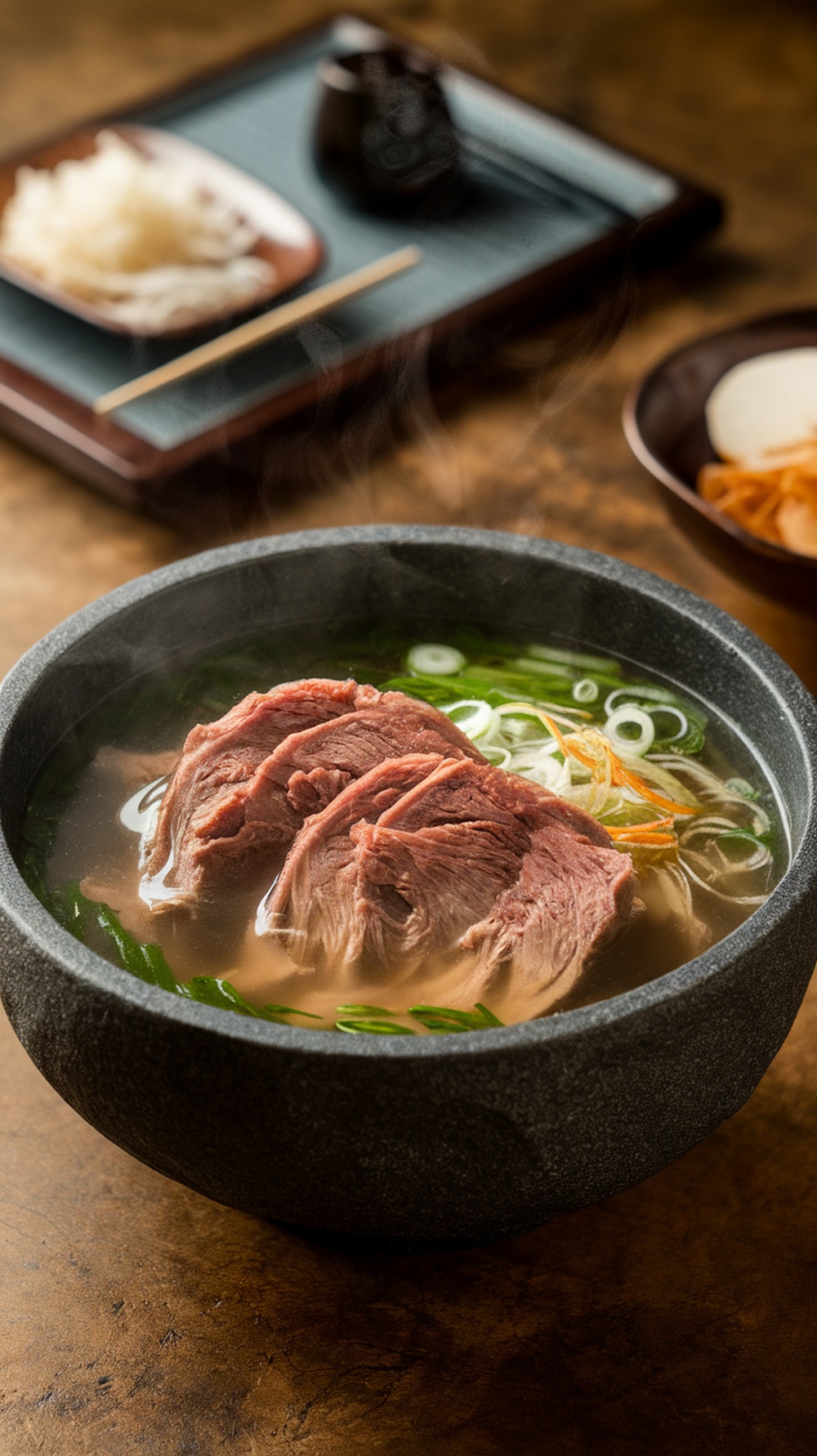
Galbitang is Korea’s ultimate comfort soup, where tender beef short ribs simmer for hours in a clear, fragrant broth with radish and garlic. What makes it special isn’t just the melt-in-your-mouth meat or the sweet radish cubes but how the simple skimming and slow cooking transform basic ingredients into something magical. This is the soup Korean grandmothers make when you’re sick, when winter hits hard, or when you need a warm hug in bowl form—each sip carrying generations of cooking wisdom.
The beauty of galbitang lies in its healing simplicity. There are no fancy techniques, just patience as the broth develops its golden clarity and the meat becomes fork-tender. Served with steamed rice and kimchi, it’s a complete meal that nourishes both body and soul. Whether you’re fighting a cold or just craving comfort, this timeless Korean classic never fails to warm you from the inside out.
Ingredients:
- 2 lbs beef short ribs
- 1 daikon radish, cubed
- 1 onion, halved
- 6 garlic cloves
- 3 green onions
- 8 cups water
- Salt to taste
Instructions:
- Soak ribs in cold water for 30 mins, then blanch in boiling water for 5 mins. Rinse.
- Combine ribs, radish, onion, garlic, and water in a clean pot.
- Bring to a boil, then simmer for 1.5-2 hours. Skim foam occasionally.
- Add green onions for 30 mins.
- Remove onion—season with salt.
Doenjang Jjigae (된장찌개) – Fermented Soybean Paste Stew
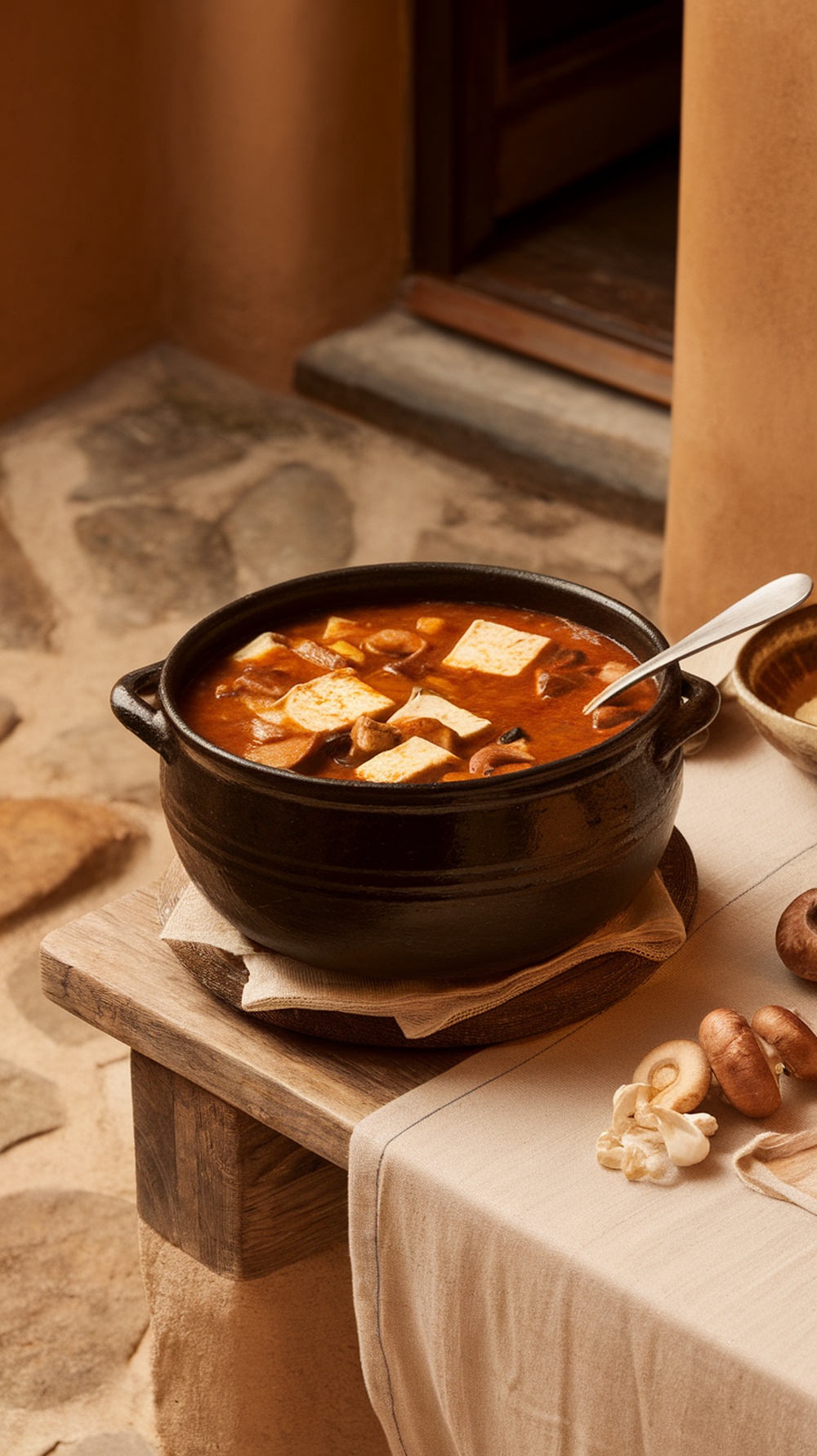
Doenjang Jjigae is a beloved Korean comfort dish that nourishes body and spirit. This robust stew gets its rich, savory depth from fermented soybean paste, while generous portions of tofu, fresh vegetables, and optional meat create a truly satisfying meal—perfect for feeling low or overwhelmed.
Preparing Doenjang Jjigae couldn’t be easier, which is why it’s a favorite for hectic evenings or when you need quick comfort. Just sauté your ingredients, add water, and let the pot simmer until all the flavors merge into something special. It’s the culinary equivalent of wrapping yourself in a cozy blanket!
Beyond being utterly delicious, this stew packs a nutritional punch with protein-rich tofu and vitamin-loaded vegetables. Moreover, it’s wonderfully adaptable – use whatever ingredients you’ve got in the fridge. Enjoy it alongside steamed rice or savor it solo; either way, Doenjang Jjigae will brighten your mood.
Are you eager to whip up a batch? Here’s an easy-to-follow recipe to begin your journey!
Ingredients
- 1 cup of doenjang (fermented soybean paste)
- 4 cups of water
- 1 block of firm tofu, diced
- 1 medium zucchini, sliced
- 1 small onion, chopped
- 1 cup of mushrooms, sliced (shiitake or button)
- 2 green onions, chopped
- 1-2 red chili peppers, sliced (optional)
- 1 tablespoon of sesame oil
- 1 teaspoon of minced garlic
Instructions
- Prepare the Base: Heat the sesame oil over medium heat in a pot. Add the garlic and onions, sautéing until fragrant, and the onions are translucent.
- Add the Vegetables: Add the zucchini and mushrooms, cooking for 3-4 minutes.
- Mix in the Doenjang: Stir in the doenjang, mixing well with the vegetables. Pour in the water and bring to a boil.
- Simmer: Once boiling, add the tofu and chili peppers. Reduce the heat and let the stew simmer for 15-20 minutes, allowing the flavors to develop.
- Garnish and Serve: Finally, stir in the chopped green onions before serving hot with a side of rice.
Kimchi Jjigae (김치찌개) – Spicy Kimchi Stew
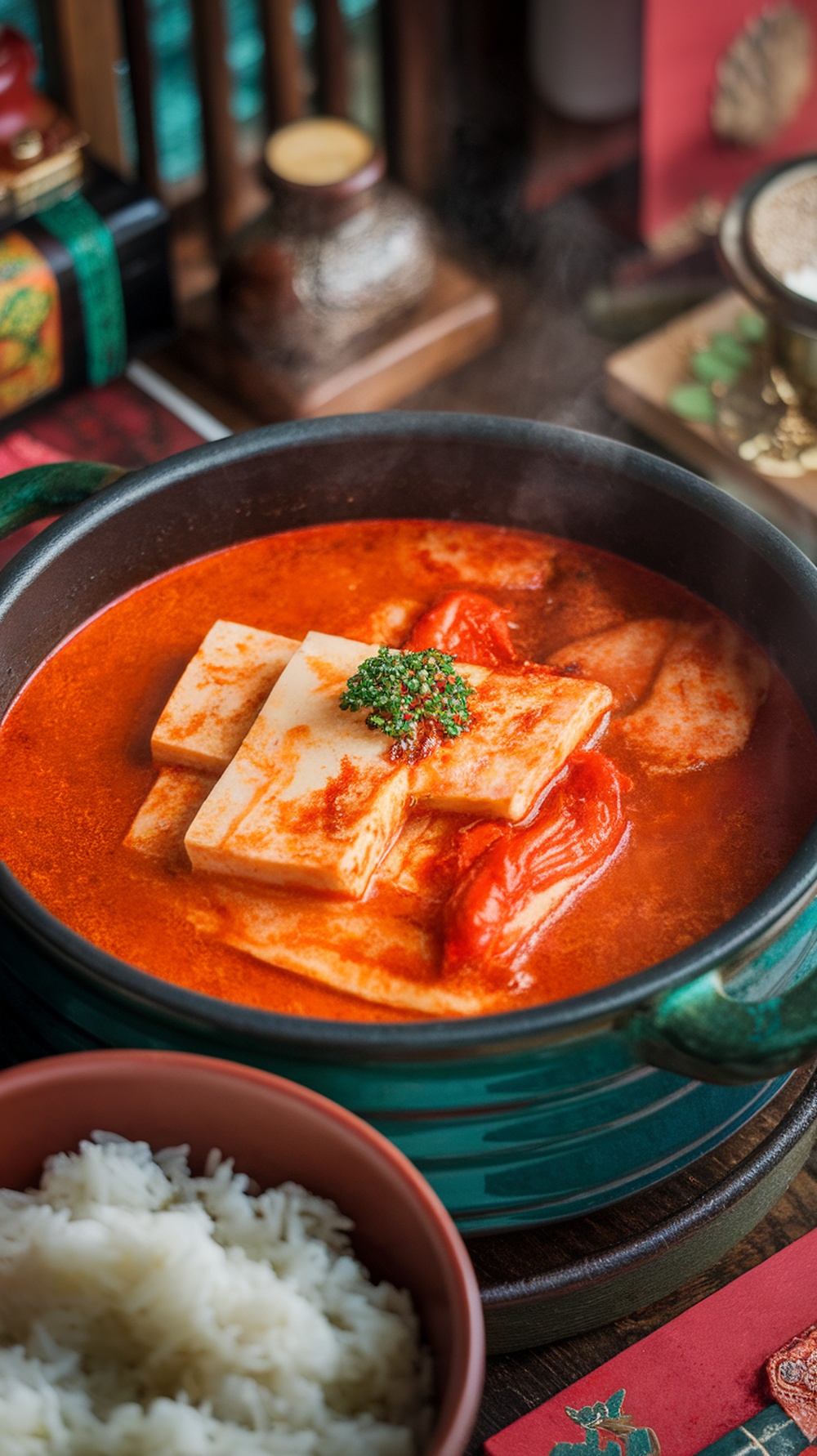
Kimchi Jjigae is one of Korea’s most cherished comfort foods, ideal for providing warmth during illness or when craving a homey dish. This flavorful stew combines the fiery kick of fermented cabbage with soft tofu and nutritious vegetables. Its straightforward preparation has made it an essential kitchen item across Korean homes.
The secret to exceptional Kimchi Jjigae is properly aged kimchi, which contributes richness and layered flavors. The spice from gochugaru (Korean chili flakes) combined with the savory elements creates a nourishing bowl that comforts both physically and emotionally. Rice traditionally accompanies this stew, transforming it into a complete and hearty meal.
When battling illness or seeking solace after an exhausting day, Kimchi Jjigae reliably boosts morale. The recipe’s versatility allows for personal touches—adding pork, mushrooms, or seafood based on available ingredients makes each version unique.
Ingredients
- 2 cups well-fermented kimchi
- 1 cup firm tofu, sliced
- 1 small onion, sliced
- 1 tablespoon gochugaru (Korean red pepper flakes)
- 4 cups water or vegetable broth
- 1 tablespoon soy sauce
- 1 teaspoon sesame oil
- 2 green onions, chopped
- Optional: 100g pork belly, sliced (for a non-vegetarian version)
Instructions
- Prepare the Base: Add the kimchi, onion, and pork belly (if using) to a pot. Stir-fry for about 5 minutes on medium heat until the ingredients soften.
- Add the Liquid: Pour in the water or vegetable broth and bring it to a boil. Once boiling, lower the heat and let it simmer for about 10 minutes to allow the flavors to meld.
- Add Tofu and Season: Gently add the tofu slices, gochugaru, soy sauce, and sesame oil. Simmer for another 5-10 minutes, adjusting the seasoning to your taste.
- Garnish and Serve: Once ready, garnish with chopped green onions and serve hot with steamed rice on the side.
Baesuk (배숙) – Korean Poached Pear With Ginger
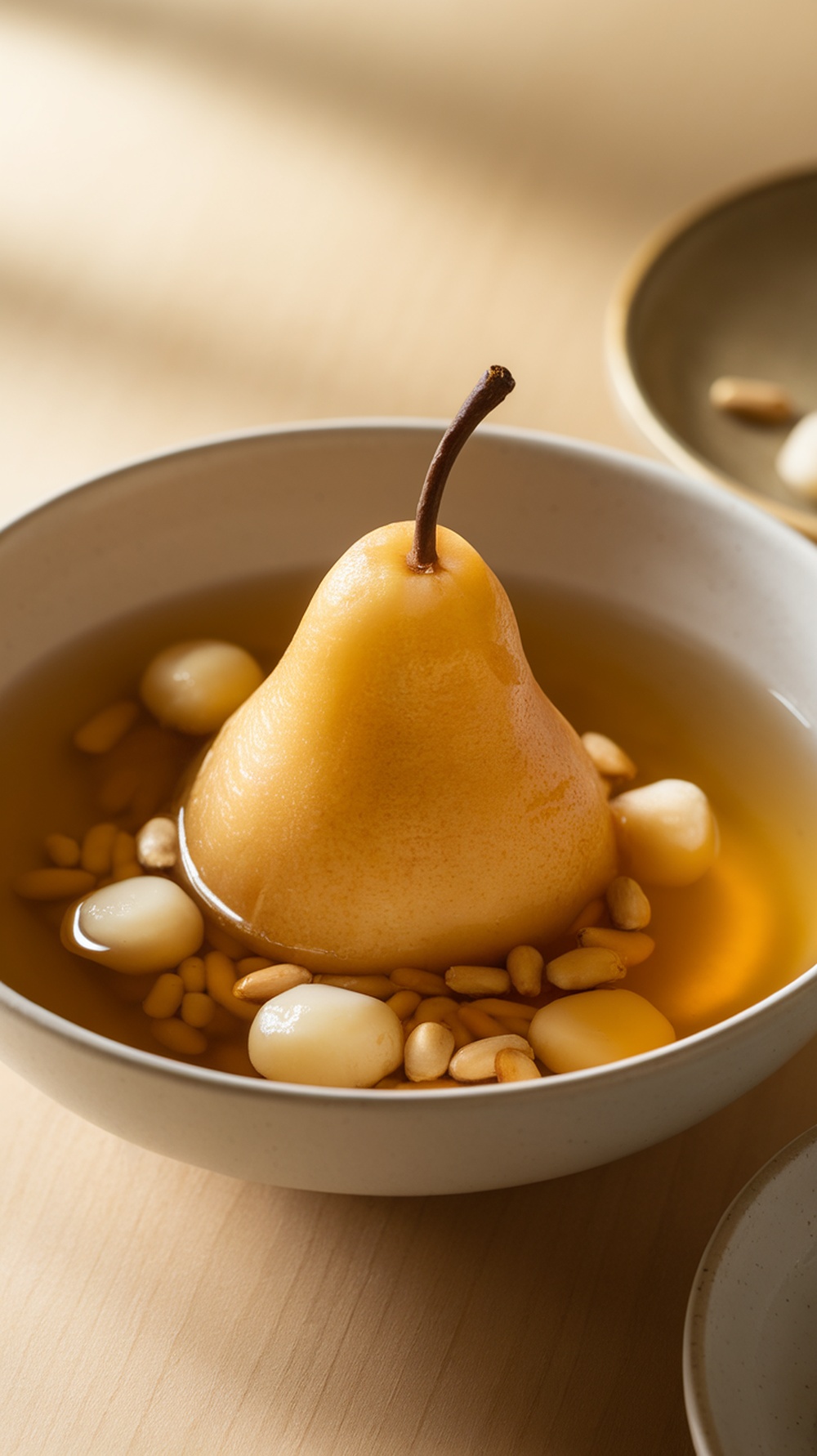
Baesuk is a beloved Korean comfort food that highlights the natural sweetness of pears, simmered gently in a soothing, fragrant broth infused with ginger. This dish is often enjoyed during cold months or when someone is feeling under the weather, as it’s known for its warming properties. Its sweet and spicy flavor profile creates a cozy atmosphere perfect for relaxation.
The preparation of Baesuk is wonderfully simple, making it accessible for anyone who needs a comforting treat. Poach the pears until tender, allowing the ginger to release its warm, aromatic essence into the broth. The result is a delightful dessert that’s delicious and nutritious.
As you enjoy this dish, you’ll appreciate how the soft, sweet pears contrast beautifully with the slight zing of ginger, providing comfort and a touch of warmth. Baesuk is often enjoyed independently but can also be served with a sprinkle of pine nuts or glutinous rice balls for added texture and flavor. This dish embodies the essence of Korean comfort foods, bringing a sense of home and healing to those who partake.
Ingredients
- 2 ripe pears
- 4 cups water
- 1/4 cup honey or sugar (adjust to taste)
- 1-2 slices of fresh ginger
- 1/4 cup pine nuts (optional for garnish)
- 1/4 cup glutinous rice balls (optional, for garnish)
Instructions
- Prepare the Pears: Peel the pears, leaving the stems intact. Cut a small slice off the bottom to help them stand upright in the pot.
- Simmer the Pears: Combine the water and ginger slices in a pot. Bring to a boil, then reduce to a simmer. Add the pears and honey or sugar, ensuring the pears are mostly submerged.
- Cook the Pears: Cover the pot and let the pears simmer for 30-40 minutes or until tender but not falling apart.
- Serve: Carefully remove the pears from the pot and place them in a bowl. Pour the ginger broth over the pears and garnish with pine nuts and glutinous rice balls if desired. Enjoy warm!
Dak Jjim (닭찜) – Braised Chicken

Dak Jjim is a warming and comforting meal that showcases succulent chicken paired with fresh vegetables in a rich, flavorful glaze. This harmonious blend of flavors makes it a good choice for those recovering from illness or seeking emotional comfort. The umami-rich sauce with subtle sweetness coats the chicken beautifully, resulting in a deeply satisfying and nutritious experience.
This slow-cooked chicken dish requires minimal effort and is perfect for busy weeknight meals or relaxed weekend cooking. The preparation involves gently braising chicken with root vegetables like carrots and potatoes, enhanced by aromatic seasonings, intensifying the dish’s appeal. The result is a hearty meal that perfumes your kitchen with irresistible aromas during cooking.
Whether battling sickness or simply yearning for soul food, Dak Jjim offers a delicious remedy that provides physical warmth and emotional comfort. As a cornerstone of Korean comfort cuisine, this dish will earn a special place in your family’s recipe collection.
Ingredients
- 4 chicken thighs, bone-in and skin-on
- 2 medium potatoes, cut into chunks
- 2 carrots, sliced
- 1 onion, quartered
- 1 cup soy sauce
- 1/4 cup brown sugar
- 2 tablespoons sesame oil
- 4 cloves garlic, minced
- 1 tablespoon ginger, minced
- 1 cup water
- 2 green onions, chopped (for garnish)
- Sesame seeds (for garnish)
Instructions
- Prepare the Chicken: Combine the chicken thighs, potatoes, carrots, and onion in a large pot. Set aside.
- Make the Sauce: In a bowl, whisk together the soy sauce, brown sugar, sesame oil, garlic, ginger, and water until well combined.
- Cook: Pour the sauce over the chicken and vegetables in the pot. Bring to a boil over medium heat, then reduce the heat to low. Cover and simmer for about 30-40 minutes or until the chicken is cooked through and tender.
- Garnish and Serve: Once cooked, sprinkle chopped green onions and sesame seeds on top before serving. Enjoy your comforting bowl of Dak Jjim!
Hwangtae-Guk (황태국) – Dried Pollock Soup
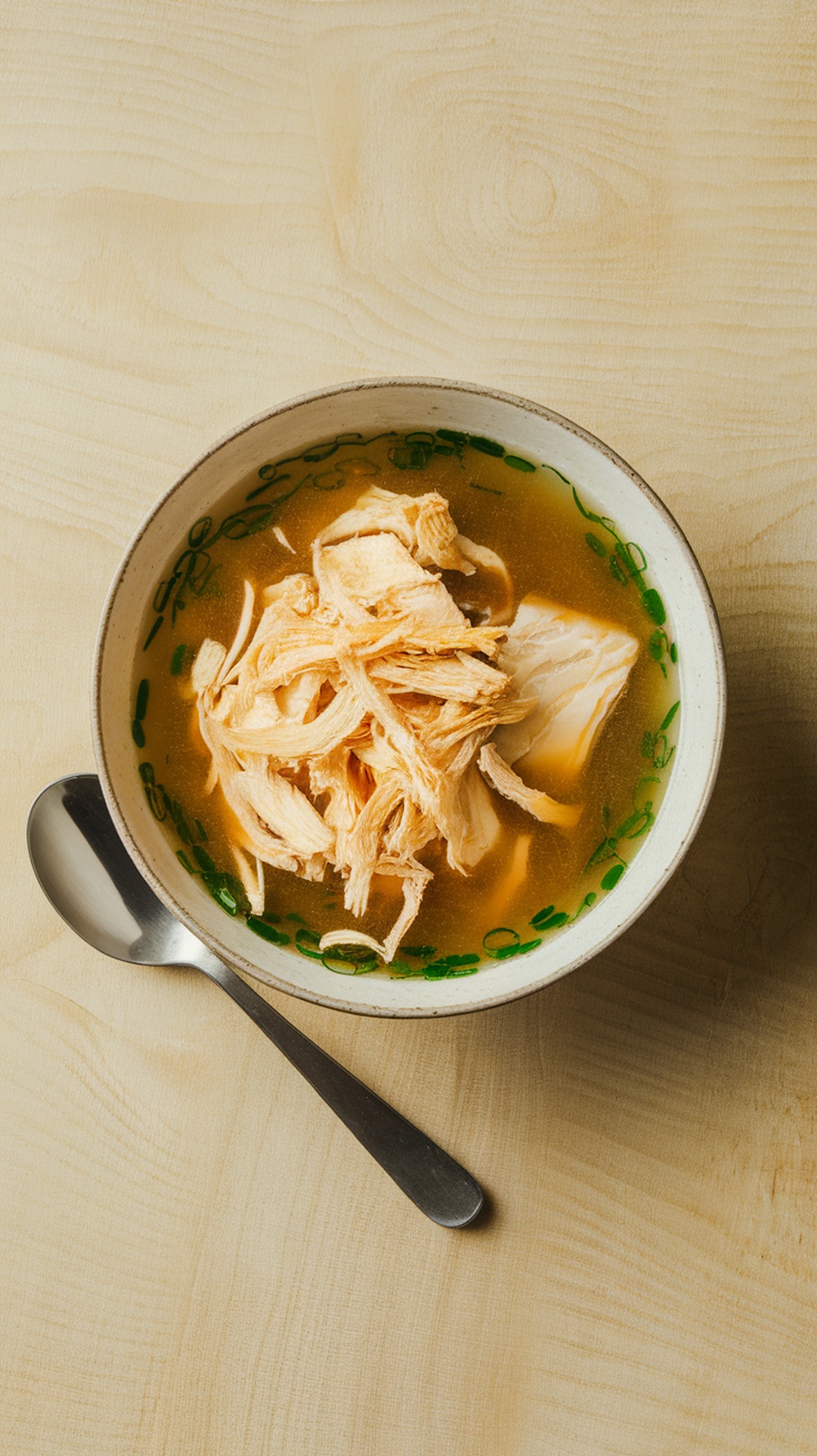
Hwangtae-Guk is a nourishing Korean broth crafted from preserved pollock. It is renowned for creating a gentle yet hearty soup base. The fish’s concentrated flavors develop into a rich, satisfying taste that brings comfort from within. This dish is an excellent remedy during recovery or when craving wholesome nourishment, requiring only basic preparation techniques and readily available ingredients.
This warming soup delivers more than simple sustenance—it provides a memorable dining experience. The rehydrated pollock offers a distinctive firmness that beautifully complements the crystal-clear cooking liquid. Chopped green onions contribute a vibrant finish, elevating each spoonful with a fresh, aromatic quality. The uncomplicated cooking method ensures success for beginners while producing a quick, satisfying meal.
Preparing Hwangtae-Guk involves gathering just a handful of pantry staples: preserved pollock, fresh water, and your preferred seasonings. In minimal time, you’ll create a restorative bowl to calm both body and mind. Let’s begin this simple cooking adventure!
Ingredients
- 100g dried pollock (hwangtae)
- 6 cups water
- 2 green onions, chopped
- 2 cloves garlic, minced
- 1 tablespoon soy sauce
- 1 teaspoon sesame oil
- Salt and pepper to taste
Instructions
- Prepare the pollock: Rinse the dried pollock under cold water to remove any excess salt. Soak it in warm water for about 15 minutes to soften.
- Make the broth: Bring the water to a boil in a pot. Add the soaked pollock, minced garlic, and soy sauce. Allow it to simmer for about 10-15 minutes.
- To add flavor: Stir in sesame oil, then season the broth with salt and pepper to taste. Add the chopped green onions just before serving.
- Serve hot: Ladle the soup into bowls and enjoy it warm, appreciating the soothing flavors of this traditional Korean comfort food.
Yachae Jeon (야채전) – Vegetable Pancakes
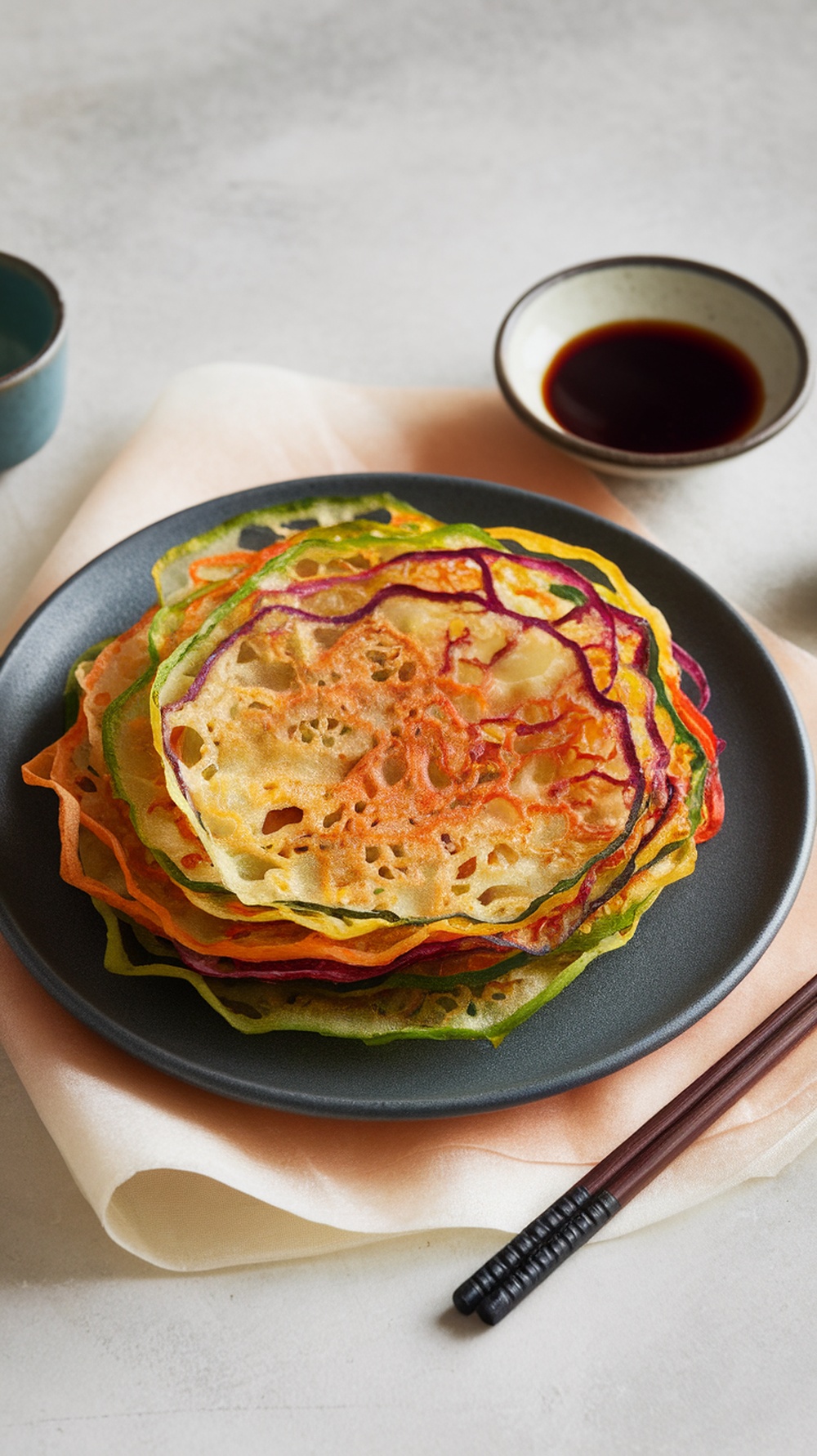
Yachae Jeon are delightful vegetable pancakes that are both crispy and comforting. They are a Korean go-to dish, especially when feeling under the weather or stressed. These pancakes are easy to make and packed with colorful vegetables, making them visually appealing and nutritious. They have a light, crispy texture and a savory flavor that pairs beautifully with a dipping sauce.
Making Yachae Jeon is straightforward. You can customize them with any vegetables you have on hand, such as zucchini, carrots, and bell peppers. The batter is simple: flour and water bind the veggies together, creating a light and airy pancake. This dish is perfect for a quick snack or a comforting meal.
To enjoy Yachae Jeon, serve them hot with a soy dipping sauce or a homemade vinegar-based sauce for an added kick. The combination of flavors and textures makes them a healing dish and a treat any time of the year!
Ingredients
- 1 cup all-purpose flour
- 1/2 cup water
- 1 cup assorted vegetables (zucchini, carrots, bell peppers, etc.), thinly sliced
- 1/4 teaspoon salt
- Vegetable oil for frying
Instructions
- Prepare the Batter: Combine the flour, water, and salt in a mixing bowl and mix until smooth.
- Add the Vegetables: Fold the sliced vegetables into the batter, ensuring they are well coated.
- Heat the Oil: Heat a generous amount of vegetable oil over medium heat in a non-stick frying pan.
- Fry the Pancakes: Scoop about 1/4 cup of the mixture into the pan, spreading it like a pancake. Cook for 3-4 minutes on each side until golden brown and crispy.
- Serve: Remove from the pan and place on paper towels to absorb excess oil. Serve warm with a dipping sauce of your choice.
Hwachae (화채) – Korean Fruit Punch

Hwachae is a refreshing Korean fruit punch with sweetness and vibrant flavors. It’s perfect for lifting spirits when you’re feeling under the weather. This chilled drink is effortless to make and combines a variety of fresh fruits with a light, sweet syrup, making it both hydrating and delicious.
Each sip offers a blend of fruity goodness that is tasty and visually appealing. Hwachae can be customized with your favorite fruits, so feel free to get creative! It’s an ideal treat to enjoy during warm days or when you need a quick pick-up.
Ingredients
- 4 cups of water
- 1 cup of sugar
- 1 cup of watermelon, diced
- 1 cup of kiwi, sliced
- 1 cup of cantaloupe, diced
- 1 cup of strawberries, halved
- 1 cup of sparkling water or soda (optional)
- Ice cubes
Instructions
- Make the Simple Syrup: Combine the water and sugar in a saucepan. Heat over medium heat, stirring until the sugar dissolves. Let it cool.
- Prepare the Fruits: While the syrup cools, prepare the fruits by dicing and slicing them into bite-sized pieces.
- Combine: Mix the cooled simple syrup with the prepared fruits in a large bowl or pitcher. If you like fizz, add the sparkling water or soda before serving.
- Serve: Fill glasses with ice cubes, pour the fruit punch over the ice, and enjoy this refreshing treat!
Hotteok (호떡) – Sweet Korean Pancakes

Hotteok is a delightful Korean treat that brings warmth and sweetness to any occasion. These fluffy pancakes are typically filled with brown sugar, cinnamon, and peanuts, making them a perfect comfort food. They have a slightly chewy texture on the outside, while the inside bursts with a sweet, gooey filling that warms the heart.
Making hotteok is quite simple and can be a fun cooking project. The dough comes together easily, and the filling can be customized. Whether you prefer a little extra spice or more nuts, it’s all about personal preference. These pancakes are not just for a cold day; they can brighten up whenever you need comfort food.
When prepared fresh, hotteok is best enjoyed warm, allowing the filling to ooze out as you take your first bite. They are often found at street food stalls in Korea, but you can whip them up right in your kitchen with just a few ingredients. If you’re feeling under the weather or need a sweet pick-me-up, hotteok will do the trick!
Ingredients
Dough:
- 2 cups flour
- 1 packet instant yeast (2¼ tsp)
- 1 tbsp sugar
- ½ tsp salt
- ¾ cup warm milk
- 1 tbsp oil
Filling:
- ½ cup brown sugar
- 1 tsp cinnamon
- 2 tbsp chopped nuts
- 1 tsp sesame seeds
Instructions
- Make dough: Mix flour, yeast, sugar & salt. Add warm milk & oil. Knead 5 mins until smooth. Cover & rest for 1 hour.
- Make filling: Mix brown sugar, cinnamon, nuts & sesame seeds.
- Shape: Divide dough into eight balls. Flatten each, add 1 tbsp filling, and seal tightly.
- Cook: Heat oil in a pan. Cook pancakes for 2-3 mins per side until golden, pressing gently.
- Serve hot (Careful – filling is molten!)
Gyeran Jjim (계란찜) – Steamed Egg Custard

Gyeran Jjim is a soft and fluffy steamed egg custard that warms the heart, and It’s. This dish is a comfort food in Korea, often enjoyed when one is under the weather or feeling stressed. Its mild flavor and delicate texture make it a perfect dish to soothe the senses.
Making Gyeran Jjim is simple and requires no special culinary skills. Mix eggs and some broth, season it lightly, and steam until set. It’s a great dish to whip up quickly, and the gentle steaming ensures the eggs remain soft and tender. Plus, it’s easy to customize by adding vegetables or protein of your choice!
Ingredients
- 4 large eggs
- 1 cup chicken or vegetable broth
- 1 tablespoon soy sauce
- 1 teaspoon sesame oil
- 2 green onions, finely chopped
- Salt to taste
- Optional: diced vegetables (like carrots, zucchini, or mushrooms)
Instructions
- Prepare the Mixture: In a bowl, whisk together the eggs, broth, soy sauce, sesame oil, and salt until well combined.
- Add Vegetables: If using, fold any diced vegetables into the egg mixture.
- Steam: Pour the mixture into a heatproof bowl. Place the bowl in a steamer or a pot with a steaming rack. Cover and steam over medium heat about 15-20 minutes until the custard is set and a toothpick inserted in the center comes clean.
- Garnish: Once cooked, remove from the steamer and sprinkle the chopped green onions on top. Serve warm, and enjoy this comforting dish!
Mandu-Guk (만둣국) – Dumpling Soup
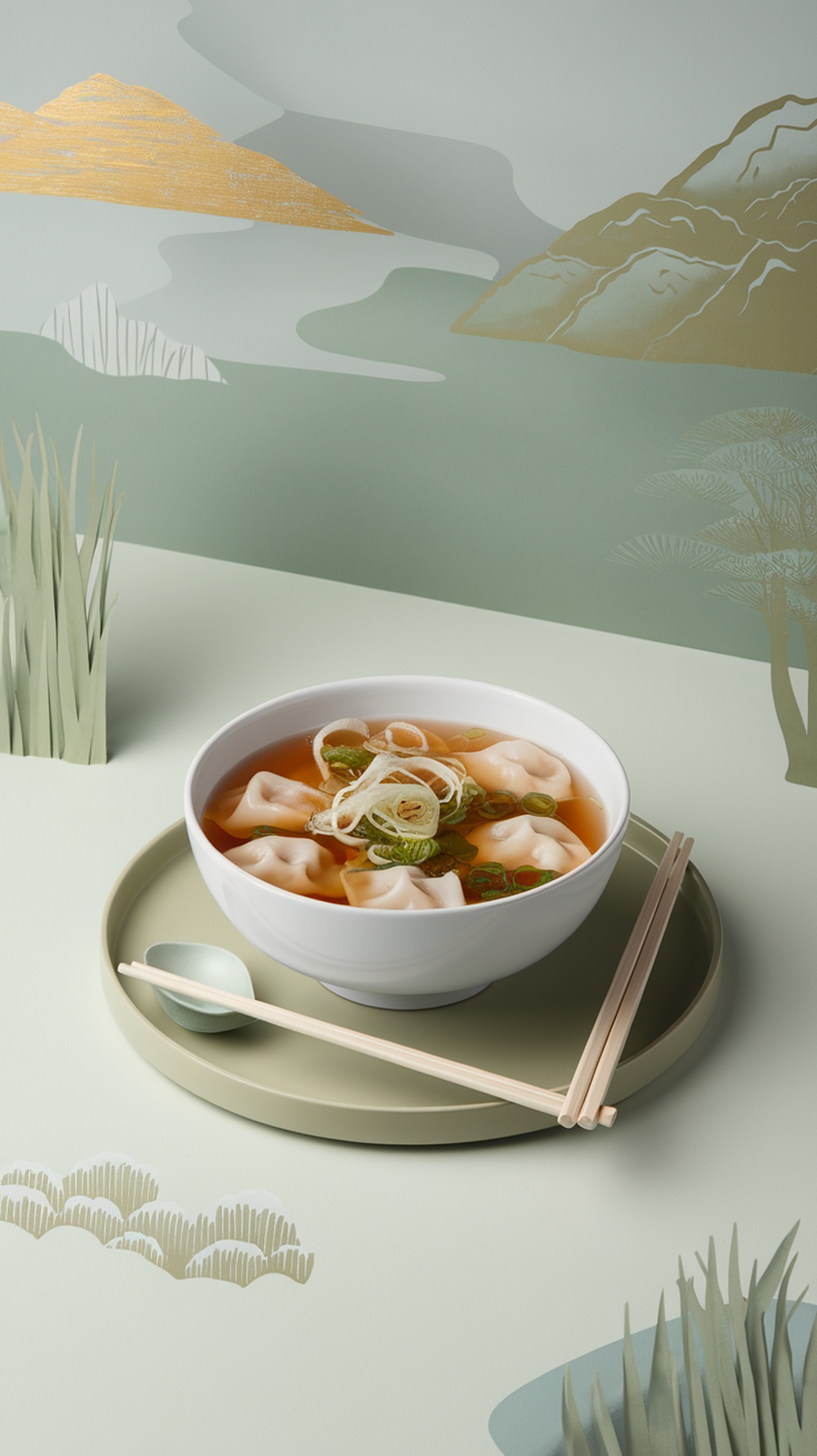
Mandu-Guk, commonly called dumpling soup, is a soothing and nurturing meal ideal for recovery days or moments requiring emotional comfort. This hearty soup showcases soft dumplings packed with flavorful fillings, floating within a rich broth that envelops you like a warm embrace. Its uncomplicated preparation makes it a favored choice among Koreans, particularly throughout during colder seasons.
Beyond being deeply satisfying, this dish offers remarkable adaptability. The dumpling filling can feature various proteins, tofu, or fresh vegetables, enabling personalization according to individual preferences. The broth typically incorporates aromatic garlic and scallions, providing a bright, invigorating element. Whether served as a complete meal or accompanying other dishes, Mandu-Guk consistently delivers warmth and wellness to both body and spirit.
Ingredients
- 1 package of pre-made dumplings (or homemade)
- 6 cups of beef or vegetable broth
- 2 cloves garlic, minced
- 1 tablespoon soy sauce
- 2 green onions, chopped
- Salt and pepper to taste
- 1 egg (optional, for garnish)
Instructions
- Prepare the Broth: Heat the broth over medium heat in a large pot. Add minced garlic and soy sauce, and let it simmer for about 5 minutes.
- Cook the Dumplings: Gently add the dumplings to the simmering broth. Allow them to cook according to package instructions, usually 5-7 minutes, until they float.
- Season: Stir in chopped green onions and season with salt and pepper to taste. If using, crack an egg into the soup and let it poach for a minute.
- Serve: Ladle the soup into bowls, garnishing with extra green onions if desired. Enjoy hot!
Jjinbbang (찐빵) – Steamed Red Bean Buns
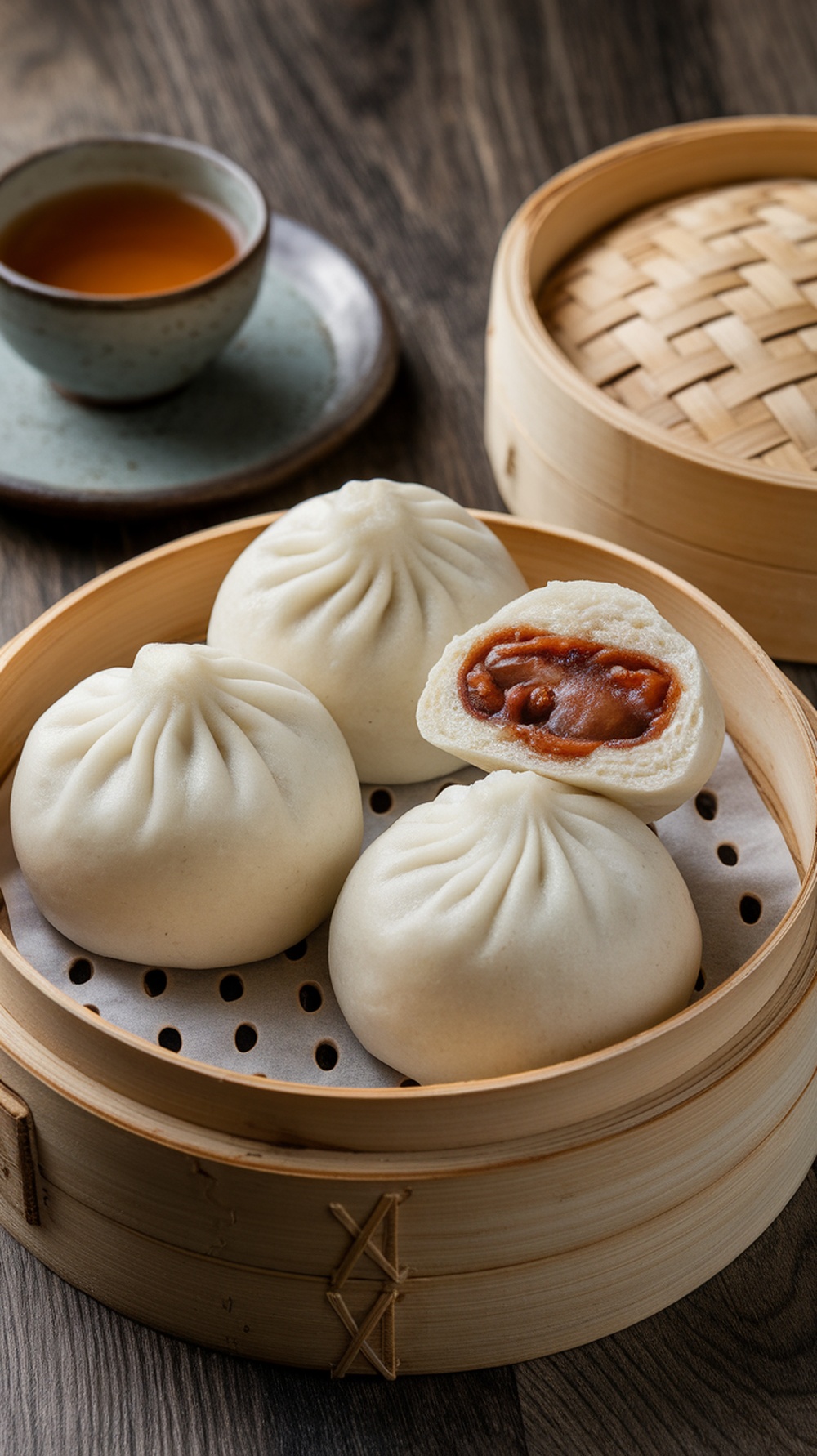
Jjinbbang, known as steamed red bean buns, represents a beloved comfort food in Korean culinary tradition. These pillowy, bread-like treats contain a sweet red bean filling, creating a wonderful harmony of consistency and taste. Their tender, heated, and pleasantly elastic texture makes them an ideal indulgence during recovery or when seeking emotional comfort.
Creating jjinbbang involves a simple method that requires no specialized tools or equipment. These delectable buns can be prepared with minimal effort, using only essential ingredients and allowing time for proper dough development. They evoke feelings of coziness and cherished memories, whether savored during cold weather or as an afternoon treat.
Ingredients
- 2 cups all-purpose flour
- 1/4 cup granulated sugar
- 1 teaspoon active dry yeast
- 1/2 teaspoon salt
- 1/2 cup warm water
- 1 tablespoon vegetable oil
- 1 cup sweetened red bean paste
Instructions
- Prepare the Dough: In a bowl, mix warm water and yeast. Let it sit for about 5 minutes until foamy. Stir in sugar, salt, and vegetable oil. Gradually add in the flour, mixing until a soft dough forms.
- Knead the Dough: Turn the dough onto a floured surface and knead for 5-7 minutes until smooth. Place the dough in a greased bowl, cover it with a cloth, and let it rise in a warm place until doubled in size, for about 1 hour.
- Shape the Buns: Once the dough has risen, punch it down and divide it into small portions. Flatten each piece, fill with a spoonful of red bean paste, and pinch the edges to seal.
- Steam the Buns: Place the buns in a steamer lined with parchment paper, ensuring they have space to expand. Steam for 15-20 minutes until they are fluffy and cooked.
Conclusion
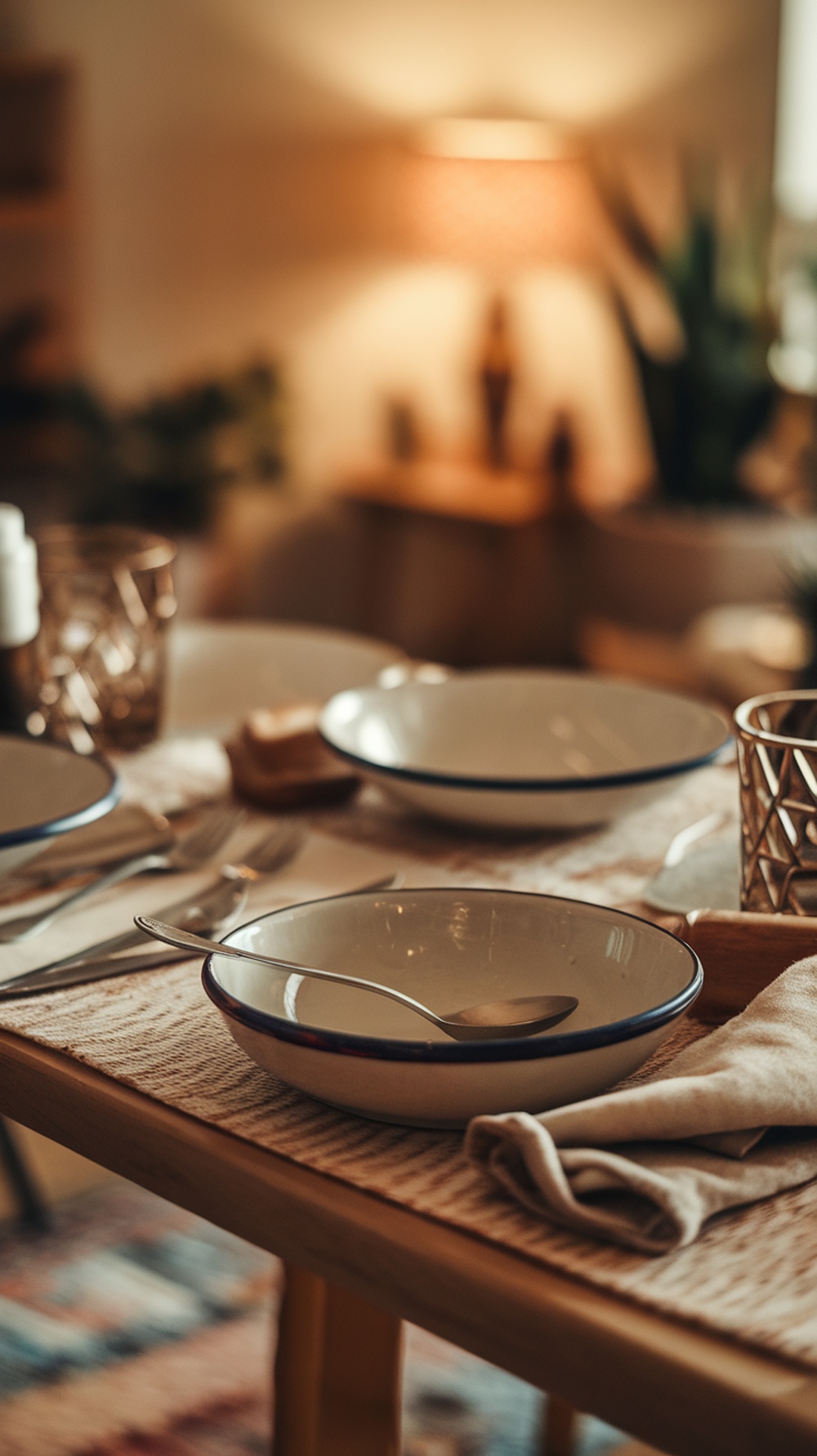
Korean comfort foods holds a special place in people’s hearts, especially during illness or stress. These dishes deliver rich, satisfying flavors that provide both physical nourishment and emotional healing with every warming bite.
From aromatic broths like Miyeok-Guk and Hwangtae-Guk that gently restore your strength to bold, fermented classics such as Kimchi Jjigae that awaken your senses, to sweet therapeutic treats like Baesuk and Hotteok that comfort your soul—each recipe tells a story of care, tradition, and love. These dishes excel not only in their accessibility through common ingredients and straightforward preparation methods but also in their remarkable versatility to meet whatever emotional or physical need you’re experiencing. Whether you crave something light and healing or rich and indulgent, Korean comfort cuisine offers the perfect remedy.
Korean comfort foods remind us that eating is more than sustenance—it’s soul medicine and cultural connection. These dishes invite us to slow down, savor each moment, and rediscover the healing power of mindful, loving nourishment.